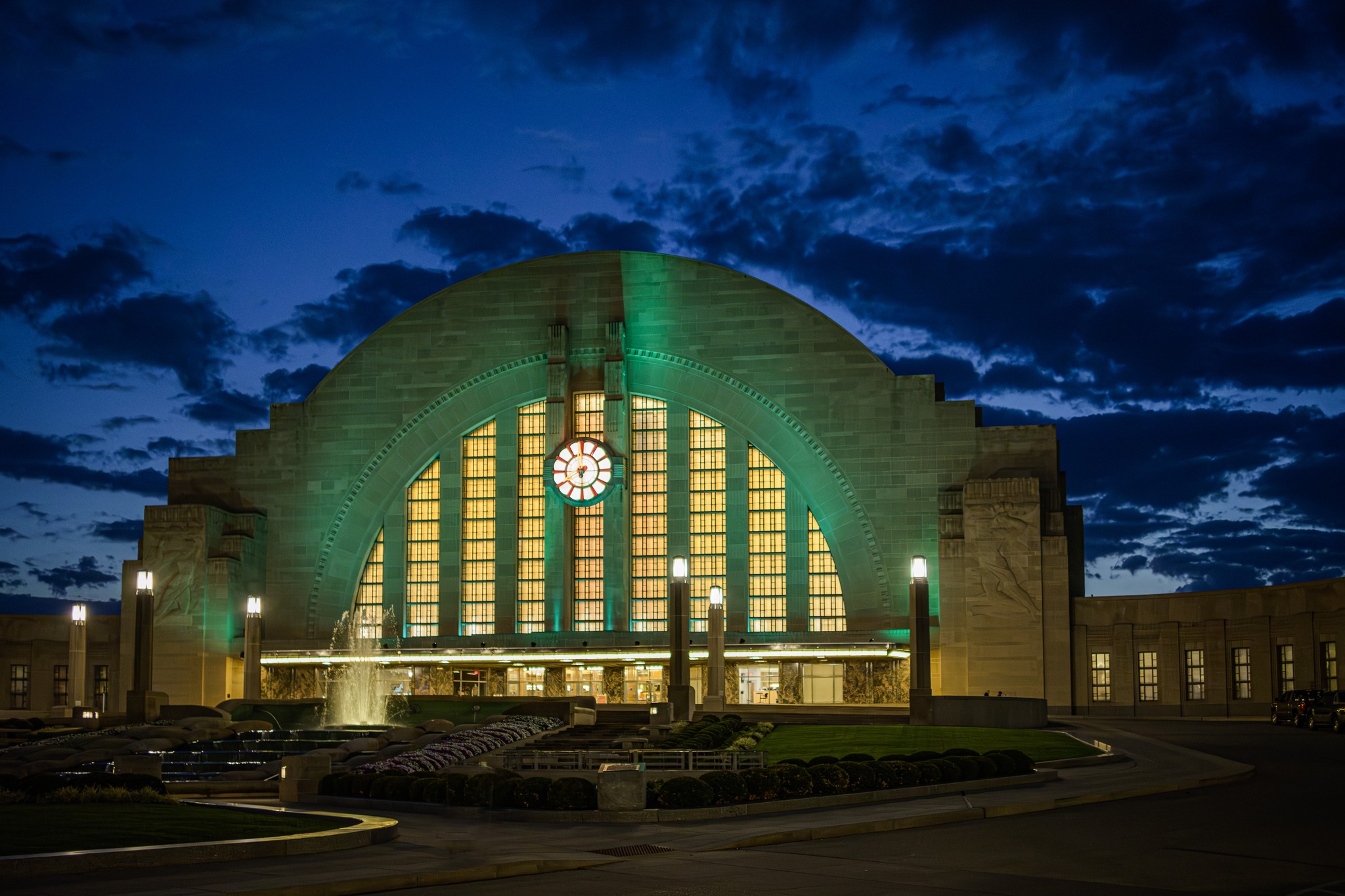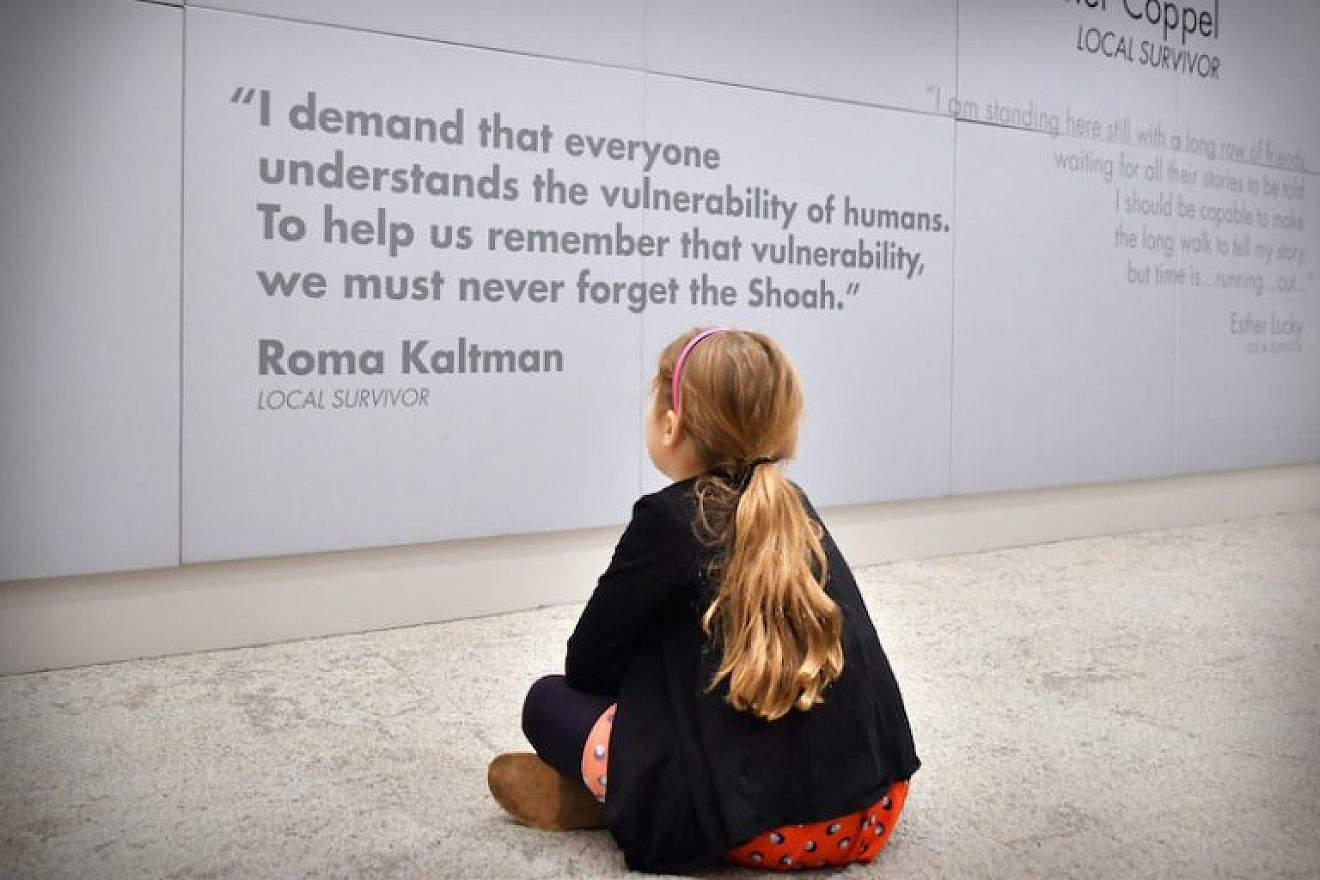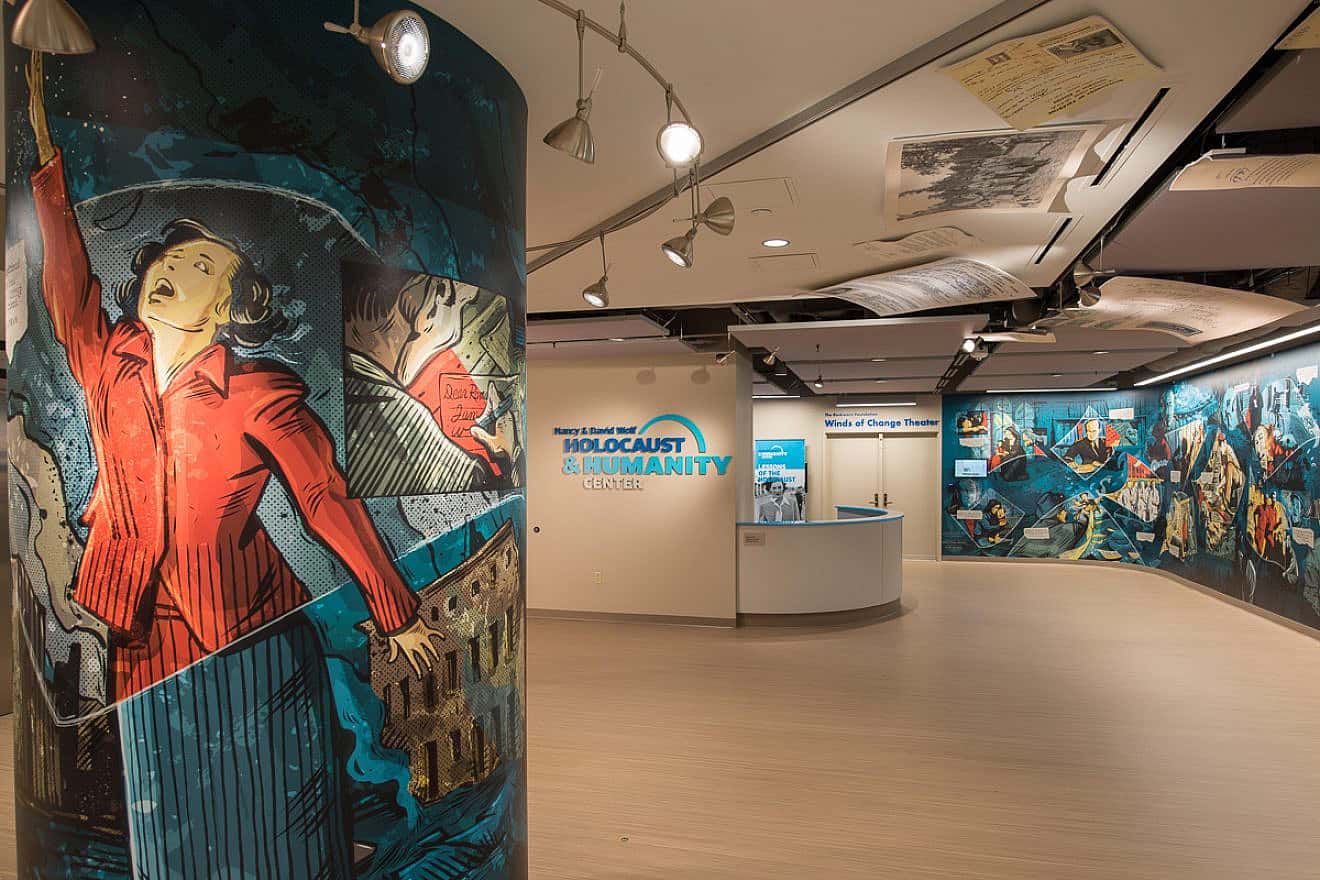Ahead of International Holocaust Remembrance Day, held annually on Jan. 27, and in response to “the unprecedented rise in Holocaust denial and antisemitism,” the Nancy and David Wolf Holocaust and Humanity Center in Cincinnati is waiving admissions fees for the month, the museum announced last week.
“We offered free admission last December after a rise in antisemitism and comments from Kanye West, and we saw our largest month of attendance since our grand opening,” Kara Driscoll, director of marketing and events at the center, told JNS.
“A major goal of this month’s announcement was to get the community thinking about these issues and remind them to experience the museum and learn from this history,” she added, “particularly as we approach International Holocaust Remembrance Day.”
Under normal circumstances, adults (ages 13-59) pay $10 for admission, with discounted rates for students with an ID or those under 13 ($5), and seniors over 60 and members of the military ($7.50). The museum also participates in a program with reduced rates or free admission for those with financial need.
“Our prices are affordable,” Driscoll said. “There are obviously operational costs to running a nonprofit. We’re not only a museum, but also an educational center that trains educators, runs free public events throughout the year, and so much more.”
The center, which both aims to educate the public about the Holocaust and to foster “understanding, inclusion and engaged citizenship,” is the only Holocaust museum in the nation “with a positive, authentic connection to its space,” according to Driscoll.
The museum moved to its current location—in Cincinnati’s historic Union Terminal—in 2019. That is “the very place where thousands of local Holocaust survivors arrived by train from war-torn Europe to rebuild their lives,” Driscoll said.
“The iconic train terminal is also home to the Cincinnati Museum Center,” she said. “This unique partnership is the first of its kind in the United States, putting Cincinnati on the map for bringing the lessons of the Holocaust into the civic conversation.”

Always evolving
JNS asked to what extent the museum has changed its approach since Hamas’s terror attack on Oct. 7, and how Holocaust museums might reach those who publicly call for genocide against Jews. (Research released last year suggested that 74% of non-Jewish respondents had never visited a Holocaust museum or memorial.)
“Museums are consistently evolving to meet the moment and educate visitors in different ways,” Driscoll said.
She noted that the museum added a new kiosk in its exhibit titled “Origins” due to rising antisemitism. “Our primary goal is to stay grounded in sharing this history and to inspire action,” she said.
The museum’s “Dimensions in Testimony” uses “specialized recording and display technologies and next-generation natural language processing,” to allow visitors to “ask” questions of “two-dimensional displays of Holocaust survivors” and to receive real-time responses.
“We will feature testimony of local survivors in the next year, and it’s a powerful way for students and community members to learn about this history and these local stories in an interactive way,” Driscoll said.
‘Not an anomaly’
Oct. 7 was the deadliest day for Jews since the Holocaust, and in the aftermath, “we’ve witnessed the highest level of antisemitic incidents in the United States in any two-month period in history,” Driscoll noted, when JNS asked if experts at the museum were surprised by surging Jew-hatred.
“An unprecedented mainstreaming of antisemitic rhetoric and action, which goes far beyond harsh critique of Israeli policy. Harassment and assaults targeting Jews all over the globe—on the street—at synagogues, universities, restaurants, businesses, and yes, even Holocaust museums,” she said. “Right here in Cincinnati, chants of ‘Death to Jews’ in our schools. Students telling their Jewish classmates that ‘Hitler should have finished the job.’ Nazi salutes and swastikas drawn in school bathrooms—among many other alarming incidents.”
But as abhorrent as that all is, “history tells us what we are seeing today is not an anomaly,” Driscoll said. “It is, rather, the latest episode in an ancient cycle of Jew hate, which has ebbed and flowed across societies all over the world and throughout time since the birth of the Jewish people—driven by the vile and ever-mutating virus of antisemitism.”
Lies that cast Jews as particularly evil and deserving of persecution have led to acceptance of antisemitic violence, according to Driscoll.
“At a time when we should be learning from history to understand the way this story has all too often played out, there is a disturbing growing school of Holocaust denial,” she said, noting recent studies that 20% of young Americans think that the Holocaust was a myth, and 10% of Americans “believe the outlandish lie that Jews caused the Holocaust.”
“The Holocaust is one of the most documented events in human history. And we are in living memory of it—many of our survivors are still here talking about their firsthand experiences. How can people deny this history?” she said. “The brutal crimes against Israeli civilians were well documented—filmed and shared—by the people who committed them. And today, we know there are many people who don’t think these attacks even happened.”

‘We hope to build a community of upstanders’
An “antisemitic baseline mistrust of Jews is baked into our societies,” she said. “Add to that a media ecosystem where conspiracy theories are rampant, and you can see how this happens. The only anecdote is education, and that’s what we do at the center.”
JNS asked Driscoll how Holocaust museums impact their visitors.
“The data show that students who experience Holocaust museums and learn about this history show greater levels of empathy and better critical-thinking skills,” she said.
Surveys of the museum’s visitors, including those who attend its events, suggest that 94% feel compelled as a result to stand up to Jew-hatred, Driscoll said.
“They can recognize it, and they feel a connection to this history and work, and they feel empowered to stand up against it. By educating on this topic, we hope to build a community of upstanders, who stand up against not only antisemitism but all forms of injustice and hatred,” she stated.
“These are times that feed a tendency to dehumanize—to assign labels, to vilify entire groups of people by painting with broad strokes. As divisions grow deeper, it becomes harder and harder to hold on to our own humanity, and to see the humanity in other people,” she added. “Just as hatred can be taught, so, too, can humanity, and our museum is designed to do just that.”


























